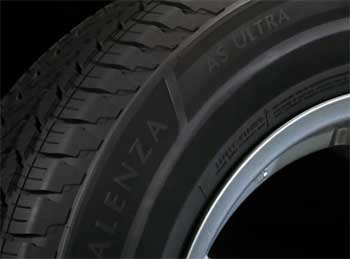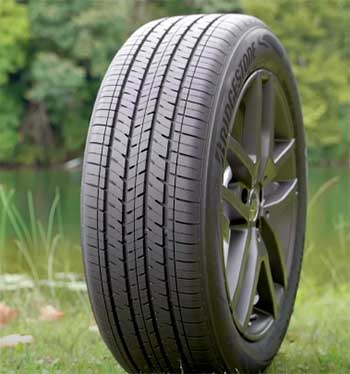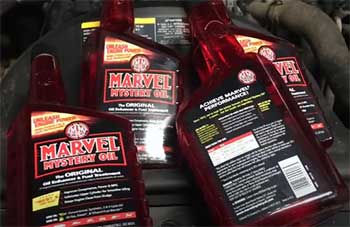For most car owners, selecting the perfect tire involves a balance between performance, longevity, and cost. This decision-making process gets trickier when considering reputable brands with an array of tire series like Bridgestone.
In this article, we’ll dive deep into the world of Bridgestone tires, focusing on two of their renowned series: Alenza and Ecopia.
A Brief Comparison Table
| Features/Characteristics | Bridgestone Alenza | Bridgestone Ecopia |
| Purpose and Design | Designed for premium SUVs, light trucks, and crossovers; focus on all-season performance, high mileage, and ride comfort. | Designed for fuel efficiency and a reduced carbon footprint; prioritizes a smooth, quiet ride and all-season traction. |
| Performance | Excellent traction on wet and dry surfaces; may struggle in heavy snow or icy conditions. | Adequate performance on wet and dry roads; focuses more on fuel efficiency and comfort. |
| Ride Quality | Offers a smooth and comfortable ride with excellent shock absorption. | Provides a smooth, quiet ride with minimized road noise. |
| Longevity and Durability | Known for long tread life and high mileage before needing replacement. | Might have a shorter lifespan due to the elements enhancing fuel efficiency. |
| Price | Higher price point due to premium status. | More affordable compared to the Alenza series. |
Bridgestone Alenza: A Premium Choice for SUVs and Light Trucks

The Bridgestone Alenza series is a premium range designed mainly for SUVs, light trucks, and crossovers.
These tires promise excellent ride comfort, all-season performance, and long tread life. But what makes Alenza tires stand out?
Pros of Bridgestone Alenza
- Superb Handling: Alenza tires provide a balanced mix of dry, wet, and snow traction, delivering an all-season performance that ensures a smooth ride irrespective of the weather conditions.
- Long-Lasting: Alenza tires are renowned for their longevity. Their unique tread design significantly reduces uneven wear, providing long mileage before a replacement is required.
- Comfort: These tires are built for comfort. They offer a quiet ride and excellent shock absorption that translates into smooth and comfortable driving.
Cons of Bridgestone Alenza
- Cost: Alenza tires are premium products, and their cost reflects this. They are generally more expensive than many other tires in their category.
- Winter Traction: While they offer good all-season performance, Alenza tires might not be the best option for harsh winter conditions. They perform admirably in light snow, but in heavier snow or icy conditions, a dedicated winter tire would be more suitable.
Also Read: Differences Between Bridgestone Dueler And Ecopia Tires.
Bridgestone Ecopia: A Green Approach To Driving

The Bridgestone Ecopia series, on the other hand, targets environmentally-conscious drivers.
Ecopia tires are engineered to maximize fuel efficiency and deliver a smooth, quiet ride.
Pros of Bridgestone Ecopia
- Fuel Efficiency: The Ecopia series uses low rolling resistance technology that enhances fuel efficiency, thus reducing CO2 emissions and saving you money at the gas pump.
- Comfort and Quietness: Ecopia tires are designed for comfort. They offer a quiet, smooth ride, with minimized road noise, which is a big plus for those long drives.
- All-Season Performance: Similar to Alenza, Ecopia tires offer reliable all-season traction, providing a confident drive in a variety of weather conditions.
Cons of Bridgestone Ecopia
- Tread Life: While the Ecopia series offers many advantages, tread life may be a concern. The very design elements that enhance fuel efficiency can sometimes lead to faster tread wear.
- Winter Handling: Though marketed as all-season, Ecopia tires, like their Alenza counterparts, may not be the best choice for severe winter conditions. A dedicated winter tire would be safer in such instances.
Key Differences between Bridgestone Alenza and Ecopia Tires
Bridgestone’s Alenza and Ecopia tire series cater to different user needs and preferences, resulting in distinctive features, performances, and benefits. Let’s explore the key differences between these two series in detail.
- Purpose and Design
One of the main differences lies in their purpose and design.
Bridgestone Alenza tires are crafted for premium SUVs, light trucks, and crossovers, focusing on delivering all-season performance, high mileage, and ride comfort. Their tread patterns are specifically designed to offer balanced traction on dry, wet, and lightly snow-covered surfaces.
On the contrary, Bridgestone Ecopia tires are designed with fuel efficiency and reduced carbon footprint at the forefront. While they also provide comfort and all-season traction, the central design feature is the low rolling resistance technology, which improves fuel economy.
- Performance and Ride Quality
In terms of performance, both tires exhibit distinctive traits.
Bridgestone Alenza tires offer an exceptional balance between performance and comfort. They provide excellent traction on wet and dry surfaces, ensuring a smooth and confident ride. However, their performance might not be optimal in heavy snow or icy conditions.
Bridgestone Ecopia tires, while performing adequately on wet and dry roads, are more about fuel efficiency and comfort than extreme performance. They ensure a smooth, quiet ride, but their snow traction is somewhat limited, similar to Alenza tires.
- Longevity and Durability
The Alenza and Ecopia series also have differences when it comes to durability and longevity.
Bridgestone Alenza tires, known for their long tread life, offer high mileage before needing replacement. The special tread compound and design minimize uneven wear, contributing to their extended lifespan.
In contrast, Bridgestone Ecopia tires might have a shorter lifespan, mainly because the elements that enhance fuel efficiency can sometimes compromise tread life.
- Price
There’s a noticeable difference in the price range between Alenza and Ecopia tires. Bridgestone Alenza tires, being a premium choice, come at a higher price point. Conversely, Bridgestone Ecopia tires, while not exactly budget, are more affordable than the Alenza series.
Also Read: Comparison of Bridgestone Alenza AS Ultra And WeatherPeak Tires.
Frequently Asked Questions (FAQ)
Yes, one of the key selling points of the Bridgestone Ecopia series is its ability to provide a quiet and comfortable ride. This is achieved by minimizing road noise, making them a great choice for highway driving.
Ecopia is a series of tires manufactured by Bridgestone. So, while Bridgestone is the brand, Ecopia refers to a specific range of tires within that brand, designed for fuel efficiency and comfort.
Alenza is a series within the Dueler line. While all Dueler tires are designed for SUVs and light trucks, the Alenza series emphasizes comfort and long tread life, in addition to all-season performance.
While the exact mileage can vary based on factors like driving habits and conditions, Bridgestone Ecopia tires are generally expected to last around 50,000 to 70,000 miles under normal circumstances.
Wrapping Up
In conclusion, when it comes to selecting between Bridgestone Alenza and Ecopia, the choice hinges on your priorities. If you’re looking for a premium experience, superior handling, and long tread life, Alenza is worth considering.
If, however, you prioritize fuel efficiency, environmental impact, and a quiet ride, then Ecopia might be the ideal choice.

